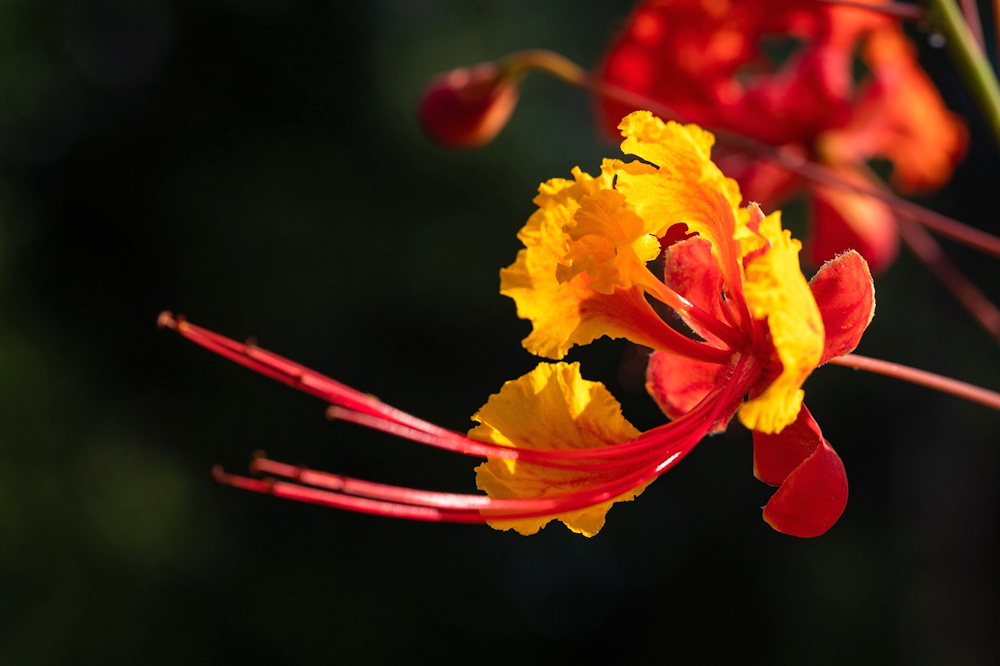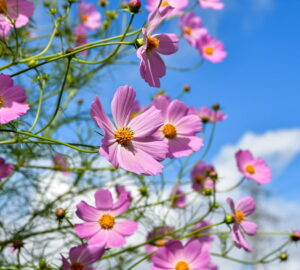The peacock flower, scientifically known as Caesalpinia pulcherrima, is a captivating and vibrant plant cherished for its stunning, bird-like blooms. With its origin in the tropical regions of the Americas, this plant has gained popularity worldwide for its striking appearance and ease of cultivation.
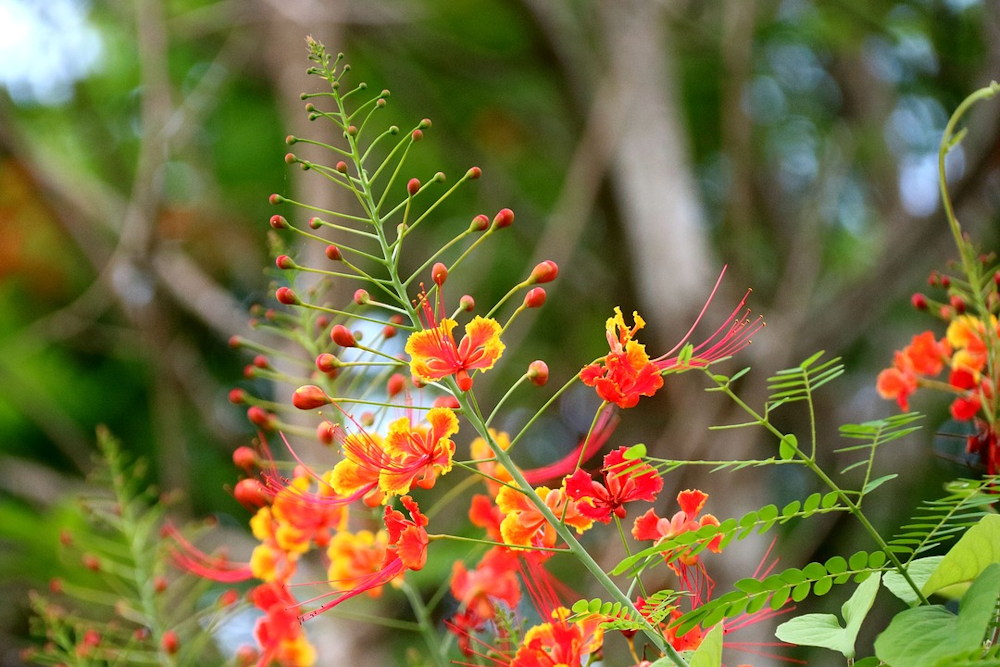
Roots of Beauty and Names
The peacock flower, also commonly referred to as the Mexican bird of paradise, poinciana and pride of Barbados, originates from the tropical regions of the Americas, including the Caribbean, Mexico and Central America. This perennial shrub is a member of the pea family, Fabaceae, and is celebrated for its ornamental and distinctive appearance.
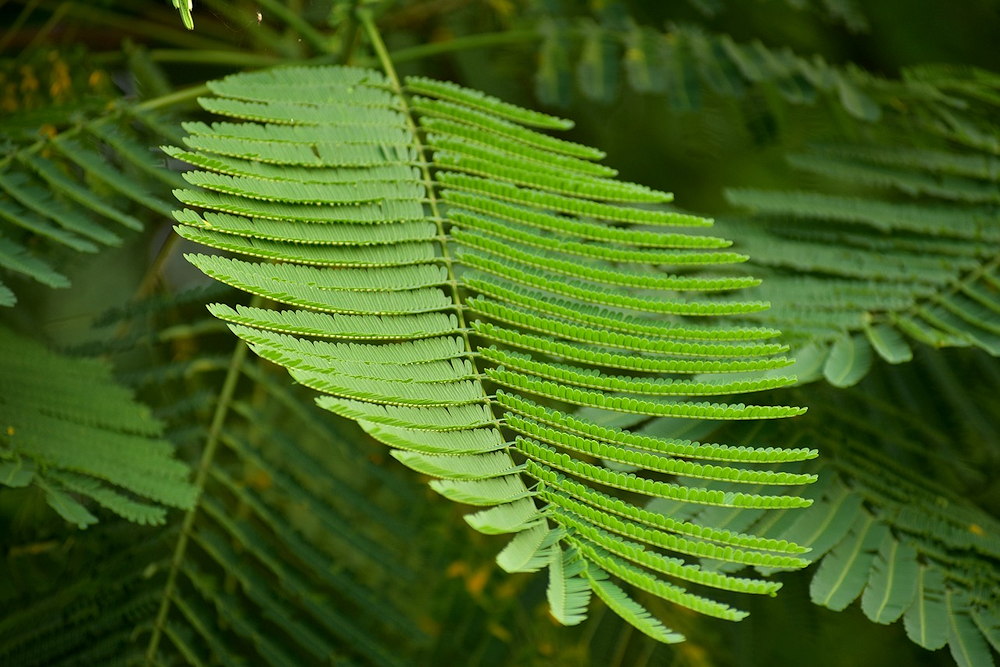
Description and Decorative Brilliance
Caesalpinia pulcherrima is renowned for its eye-catching appearance. Its compound, fern-like leaves create an elegant backdrop for its most prominent feature: the vivid, multi-colored flowers. These blossoms resemble a peacock’s plumage, boasting fiery red, orange and yellow hues. The plant’s striking appearance makes it a favorite in gardens and landscapes, adding a touch of tropical splendor wherever it’s planted. Its distinctive flowers are the primary source of its decorative value, attracting butterflies and hummingbirds, further enhancing its visual appeal.
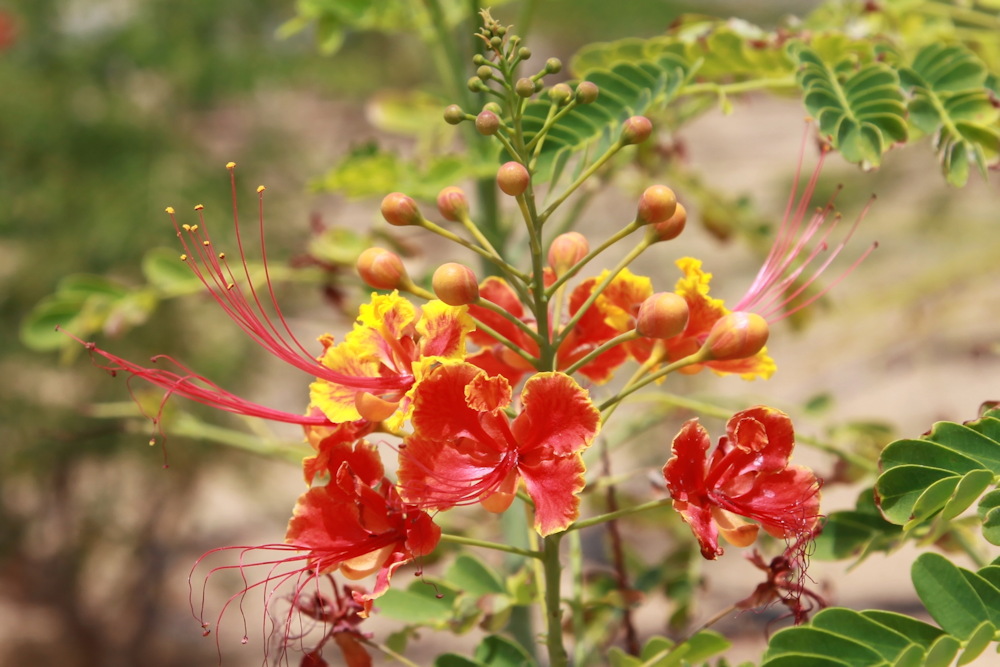
Cultivation Tips for Gardening Delight
Growing the peacock flower is a rewarding endeavor, whether in a garden or as a container plant. To thrive, this tropical beauty requires well-draining soil, ample sunlight and regular watering. Pruning can help maintain its shape and promote vigorous flowering. In colder climates, it can be cultivated as a potted plant, allowing gardeners everywhere to enjoy its beauty.
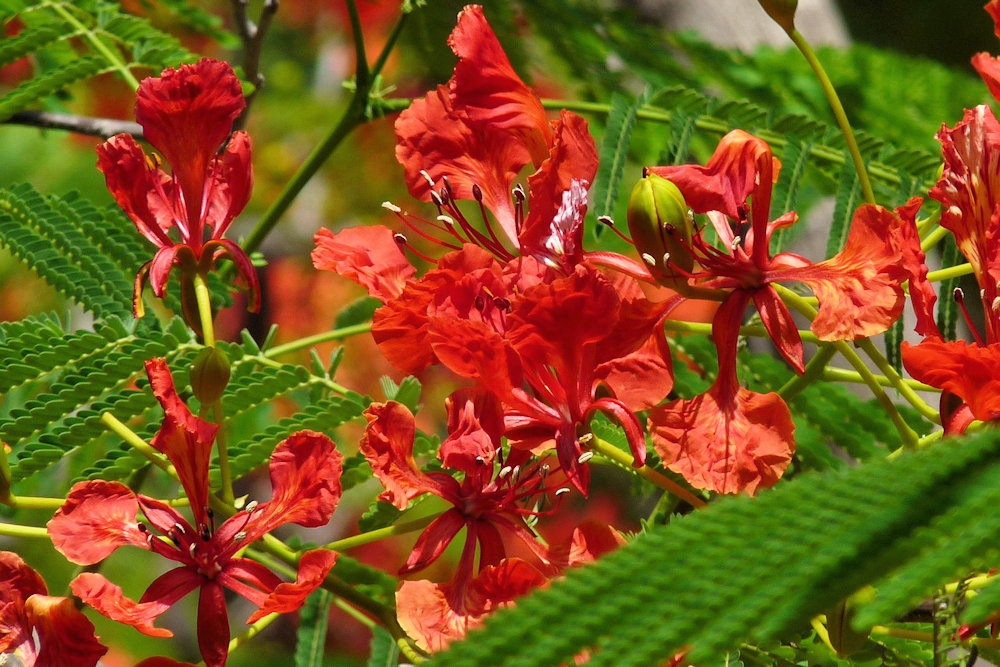
Planting and Location: Peacock flowers thrive in full sunlight, making them ideal for gardens with ample sunlight exposure. Well-draining soil is essential for their growth. If grown in containers, choose a pot with good drainage and provide a sunny spot on your patio or balcony.
Watering and Pruning: Keep the soil consistently moist but not waterlogged. During the growing season, regular pruning helps maintain a compact shape and encourages more prolific flowering.

Fertilization: Feed the plant with a balanced, slow-release fertilizer to promote healthy growth and abundant blossoms.
Protection from Cold: In regions with colder winters, consider growing peacock flowers in containers so you can bring them indoors during the winter months.
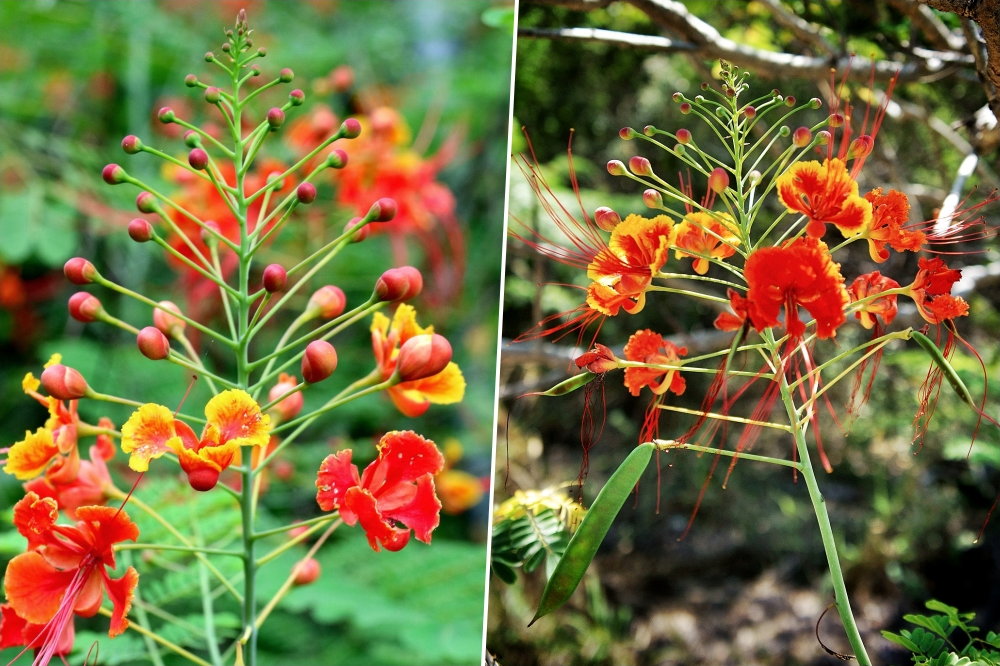
Fascinating Flora Facts
- Medicinal Uses: In some cultures, the peacock flower has been traditionally used for its medicinal properties. It is believed to have anti-inflammatory and analgesic properties and has been used to treat various ailments.
- Cultural Significance: In its native regions, the peacock flower holds cultural significance. It’s often used in religious ceremonies and celebrations.
- Invasive Potential: While a beloved ornamental plant, caution is needed in some areas as it can become invasive, competing with native vegetation.
- Drought Tolerance: Once established, peacock flowers exhibit good drought tolerance, making them suitable for xeriscaping.
- Pollinator Magnet: Peacock flowers are a favorite among pollinators, particularly butterflies and hummingbirds, making them an excellent choice for wildlife-friendly gardens.
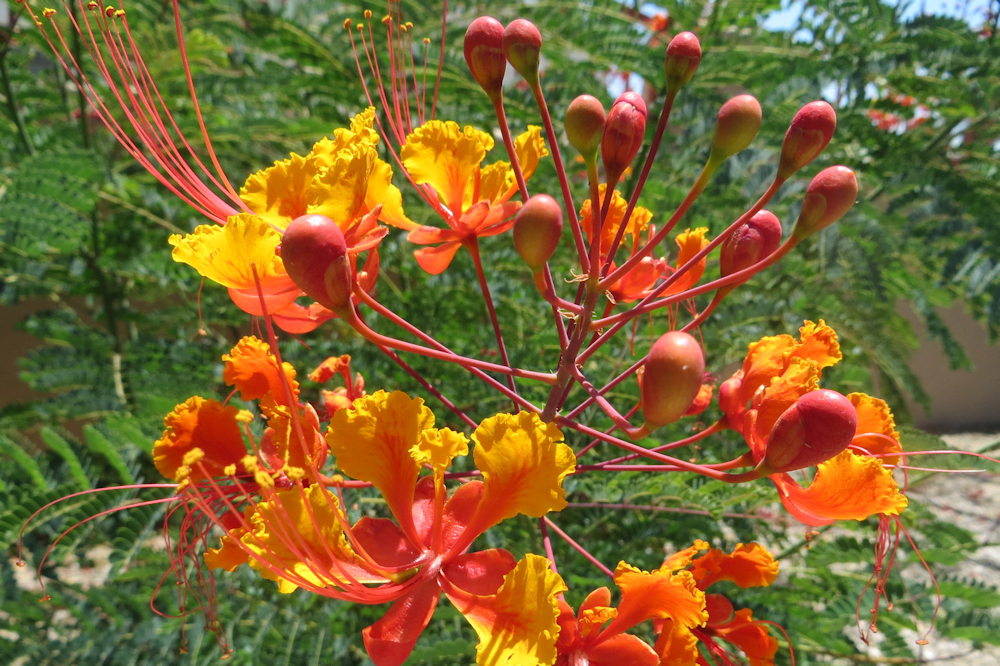
A Symphony of Color and Nature’s Beauty
Incorporating the captivating Caesalpinia pulcherrima into your garden or container collection brings forth a symphony of colors and an undeniable touch of nature’s beauty. Its fiery blossoms, reminiscent of a peacock’s plumage, not only serve as a visual delight but also attract a myriad of pollinators, adding life and vibrancy to your garden, creating a symphony of color and movement that transforms any outdoor space into a living work of art.
